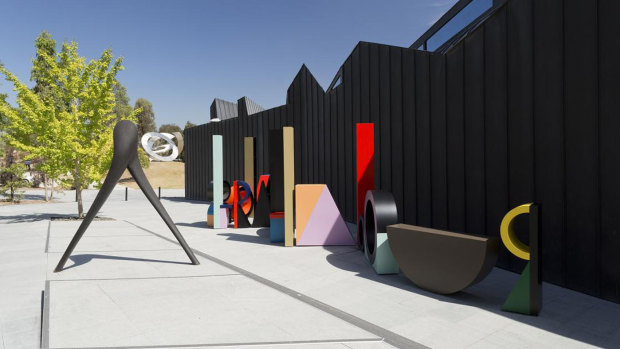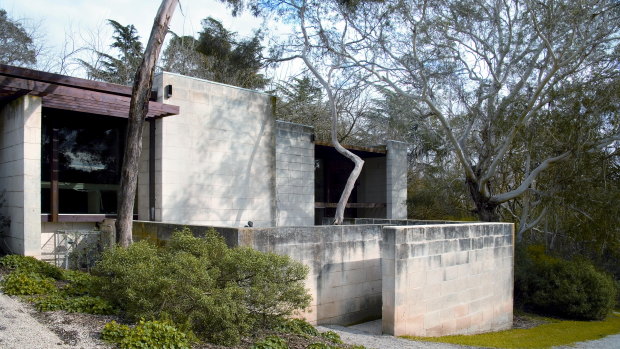By Clay Lucas and Timna Jacks
Heide Museum of Modern Art in Bulleen has warned that construction of the North East Link toll road could slash its visitor numbers and force it to downsize during the motorway’s seven-year building period.
And the museum has raised serious concerns about the potential impact of vibrations from digging twin road tunnels just 50 metres from its galleries.

Heide Museum of Modern Art: Fears vibrations from construction of the East West Link could impact its galleries.Credit: John Gollings
Hearings into the significant environmental impacts of the $15.8 billion road tunnel and Eastern Freeway widening project begin this month.
The motorway is designed to help Melbourne’s road network in the north-east cope with hundreds of thousands of extra daily car trips expected in coming decades.
Heide’s joint directors, Tim Sligo and Lesley Harding, have told a panel of planning experts considering the road’s impact that the gallery has serious concerns.
Their submission is the first time in the decade since the road was proposed in its current form that the gallery – which gets a third of its funding from the state government – has raised its concerns over the potential impacts.
Twin tunnels to be built 20 metres beneath the Yarra River come close to Heide’s main gallery, and the museum is particularly concerned about vibrations during construction damaging “Heide II”.
This heritage-listed 1960s modernist building was once the home of arts patrons John and Sunday Reed, who bought the Bulleen property in 1934. They later founded the gallery in Heide II. The building is an integral and much-loved part of the gallery.
“Heide II is built from Grampians limestone, which is particularly subject to damage from vibrations,” Mr Sligo and Ms Harding said in their submission. “Any damage to the foundations and structure of Heide II, or any of our buildings would result in significant repair work, requiring the closure of those buildings and would jeopardise Heide’s operations.”

Heide Museum of Modern Art's Heide II building.Credit: John Gollings
The gallery is also concerned about the effect of tunnelling vibrations on its art collection, which may ultimately need to be relocated and stored off-site. “It is important to note that this includes valuable major sculptures in the museum’s sculpture park that are likely to be closer to the tunnel,” the directors said.
The museum has asked the Andrews government to monitor vibrations to ensure there is no impact on its buildings or art collection. If vibrations prove too excessive, the submission said, “works should be ceased until remedial action has been taken”.
The gallery directors are also concerned about the potential for seven years of construction to dramatically reduce visitor numbers, which average 120,000 a year. Half of these visitors pay an admission fee to visit exhibitions; the fees represent around 17 per cent of the gallery’s $5 million annual revenue, while sales in the gallery gift shop make up 13 per cent.
There will be an immense construction compound at the intersection of Manningham and Bulleen roads, and the gallery is concerned this will drive away visitors.
“The potential negative perception of travelling through the construction compound at the Manningham Road intersection could dramatically reduce visitation and the financial sustainability of Heide,” the submission said.
It could result, Mr Sligo and Ms Harding warned, “in the need for the museum to downsize its operations during the period of construction”.
As part of the road’s construction, Heide wants the Andrews government to build it a direct gallery entrance off Bridge Street, through Banksia Park. It says its current entrances off Templestowe Road can be “precarious” when traffic is at its busiest.
Duncan Elliott, the head of the government’s North East Link project authority, said his team had been speaking with Heide “for 18 months about making sure there is good access for staff and visitors during construction, and managing any possible vibration”.
He said the authority would work with Heide “to not only manage any potential issues but also look for opportunities to improve visitation. This could include things like art partnerships, noise walls and hoardings as potential exhibition spaces”.